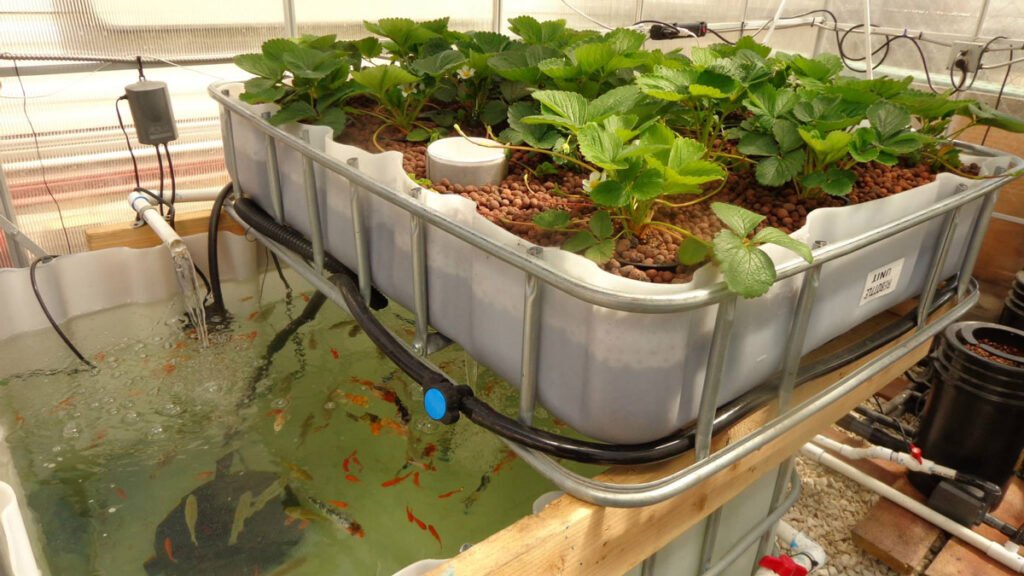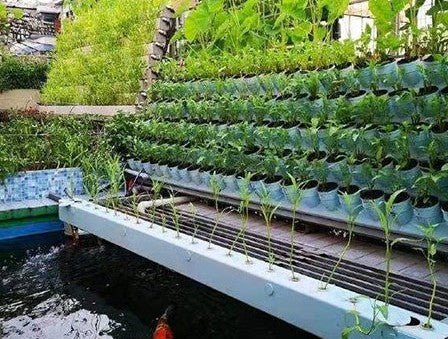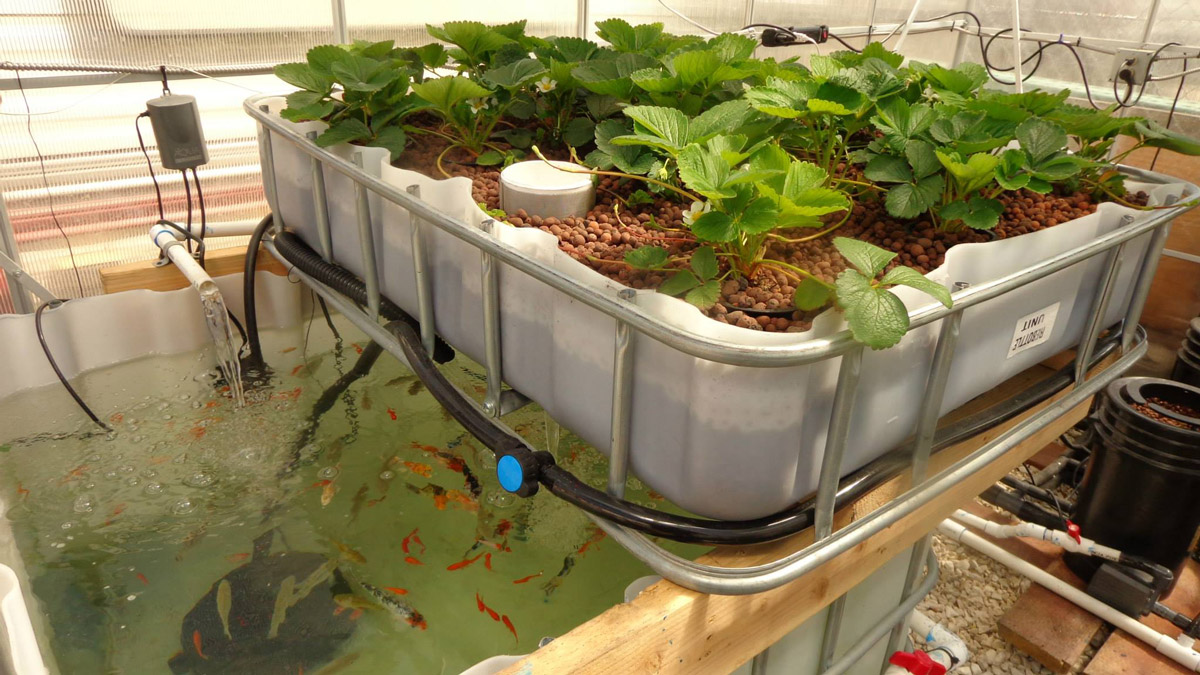
Aquaponics has always fascinated me because it’s more than just growing food—it’s creating a little ecosystem that takes care of itself. The fish provide nutrients for the plants, and the plants clean the water for the fish. Once it’s running smoothly, it feels like watching nature’s own design play out in your backyard or greenhouse.
Getting there, however, takes some careful planning. If one part of the system is off, it throws everything else out of balance. Fish need the right environment to thrive, and plants depend on the nutrients produced by those fish. When the balance is right, both flourish in ways that still surprise me even after years of tinkering with different setups.
What I’ve learned is that successful aquaponics comes down to a few key practices that keep everything in harmony. These are the ten best methods I’ve found for growing fish and plants together in a way that’s sustainable, productive, and honestly, a lot of fun.
1. Choose the Right Fish for Your System
The first decision you’ll face is which fish to raise, and this sets the tone for the entire system. Tilapia is probably the most popular choice for beginners because it’s hardy, grows quickly, and can handle a wide range of water conditions. Catfish are another good option if you live in warmer climates, while trout thrive in cooler water. For non-edible systems, goldfish and koi work beautifully since they’re decorative and resilient.
Your climate plays a huge role in this choice. For example, if you’re in a region with long winters, trout might be the better option because they prefer colder water. On the flip side, tilapia needs warmth, so unless you’re willing to heat your water, they may struggle. I once tried raising tilapia in an unheated outdoor system, and by late fall, it was a disaster. Lesson learned—the fish must match your local environment.
The exciting part is that different fish species can pair well with different plants. For instance, leafy greens tend to do well with tilapia because of the steady nutrient output, while trout systems can handle more demanding plants like tomatoes once mature. Getting this match right creates a smoother system from the start.

2. Select Plants That Thrive in Aquaponics
Not every plant loves wet feet, so choosing wisely is important. Leafy greens like lettuce, spinach, and kale are some of the easiest to start with. Herbs such as basil, mint, and parsley also thrive, which is why so many aquaponics systems you see online are full of greens and herbs. They grow quickly and make use of the constant nutrient supply.
Fruit-bearing plants can also be grown, but they usually require a more established system with higher nutrient levels. Tomatoes, peppers, and cucumbers, for example, can flourish once your system has matured and is producing plenty of nitrates. I remember my first attempt at growing tomatoes too early—it was frustrating because the plants looked weak. Once the system stabilized, though, the same plants absolutely exploded with fruit.
You’ll also want to think about your local seasons. Some plants handle cooler water better, like spinach and lettuce, while others need warmth, like basil or cucumbers. By syncing your plant choices with the natural rhythm of your environment, you’ll save yourself a lot of headaches.
3. Maintain Water Quality Balance
Water is the lifeblood of aquaponics. For the fish to stay healthy and the plants to get their nutrients, you’ll need to keep a close eye on pH, ammonia, nitrite, and nitrate levels. Fish waste first turns into ammonia, which is toxic, then beneficial bacteria break it down into nitrites and finally into nitrates—the good stuff plants use. If that cycle gets out of whack, problems show up quickly.
Regular testing is your best defense. Test kits are inexpensive and give you quick feedback. A pH between 6.8 and 7.2 is ideal for most systems, though some plants and fish tolerate small variations. I’ve found that just five minutes of testing a couple of times a week can prevent major issues down the road.
When things do go off balance, natural adjustments work best. Adding crushed limestone can raise pH gently, while peat moss can lower it. Simple tweaks like these are safer than drastic changes and keep the system running smoothly without stressing the fish or plants.
4. Establish a Proper Fish-to-Plant Ratio
One of the most common beginner mistakes is packing too many fish into the tank. It feels exciting to see a busy tank, but all that waste can quickly overwhelm the plants and crash the system. On the other hand, too many plants without enough fish means the greenery starves for nutrients. Balance is key.
As a rule of thumb, aim for about one pound of fish for every five to seven gallons of water and adjust based on plant density. For small systems, starting light and gradually adding fish is safer than overloading from the start. I once lost a whole batch of lettuce because I had too few fish producing nutrients, and it was a good reminder that plants can’t thrive without the right balance.
As your system matures, you’ll naturally need to make adjustments. Fish grow, plant demands change, and seasons shift. Keeping an eye on the ratio helps maintain steady growth for both sides.
5. Ensure Adequate Filtration and Aeration
Filtration is what keeps your water clear and your fish healthy. Mechanical filters remove solid waste, while biofilters host the beneficial bacteria that turn fish waste into plant food. Without these, toxins can build up, making the system unstable.
Aeration is equally important because fish and plants both rely on dissolved oxygen. Simple air pumps and air stones can make a world of difference, especially during warmer months when oxygen levels naturally drop. I remember the first time I lost fish—it was during a heat wave when oxygen levels crashed. Since then, I always make sure my system has backup aeration.
Your choice of grow media also plays a role. Clay pebbles or gravel not only support the plants but also provide surface area for bacteria to thrive. This natural biofiltration makes the system more resilient and self-sustaining.

6. Feed Fish Responsibly
Feeding might seem simple, but it’s one of the easiest ways to upset an aquaponics system. Fish will always act hungry, even when they don’t need more food. Overfeeding leads to uneaten feed sinking to the bottom, where it decays and causes ammonia spikes.
High-quality commercial feed is usually the best option, though supplementing with worms, insects, or kitchen scraps can add variety. What you feed your fish directly affects the nutrients your plants receive, so quality really does matter. A cheap feed may keep fish alive but won’t always result in lush, healthy plants.
Establish a routine—feeding small amounts once or twice a day usually works well. The general rule is only feed what the fish can finish in a couple of minutes. It keeps the water clean and the balance stable.
7. Monitor Temperature and Light Conditions
Temperature swings can stress both fish and plants. Tilapia, for example, love warm water, while trout need it cool. If your water temperature isn’t right, both sides of the system suffer. For outdoor systems, you’ll need to think about insulation in winter and shade in summer.
Light is just as crucial for plant growth. Indoor setups often need supplemental grow lights to mimic natural sunlight. Outdoors, you may have to provide some shading during the peak of summer to prevent plants from burning. I’ve used simple shade cloth with great success during hot months.
By aligning your system with the natural conditions—or giving it a little boost when needed—you can keep everything thriving year-round. It’s one of those details that makes the difference between frustration and success.
8. Cycle Your System Before Adding Plants and Fish
Cycling is the process of building up beneficial bacteria before you fully stock your system. It can take several weeks, but it’s absolutely worth the wait. These bacteria convert fish waste into nutrients, and without them, your system simply won’t function.
There are two ways to do it: with fish or without fish. The fishless method involves adding an ammonia source to feed the bacteria until they establish. The fish-in method is riskier because the fish are exposed to ammonia spikes during the process. I’ve tried both, and I recommend fishless cycling—it’s less stressful.
Once your tests show stable nitrate levels and low ammonia and nitrites, your system is ready for life. Skipping this step or rushing it is a recipe for disaster, so patience pays off here.
9. Prevent and Manage Pests Naturally
One of the trickiest parts of aquaponics is managing pests without harming the fish. Traditional pesticides are a big no because they’ll end up in the water and can kill your fish instantly. That means you need to get creative with natural solutions.
Companion planting helps a lot. For example, planting marigolds can deter certain pests, while basil naturally repels insects when grown alongside other plants. Introducing beneficial insects like ladybugs is another way to keep populations in check.
Simple methods like handpicking pests or spraying plants with a mild soap and water solution also work wonders. It takes more effort than reaching for a chemical spray, but it keeps your ecosystem safe and thriving.

10. Regular Maintenance and Observation
Even the best-designed systems need regular care. Daily checks for fish behavior, plant health, and water levels help you catch problems early. Weekly tasks might include cleaning filters or topping up water, while monthly routines often involve deeper checks on equipment and overall balance.
Keeping a journal can be surprisingly helpful. I like jotting down water test results, what I fed the fish, and how the plants look. Over time, it gives you a record that makes spotting patterns and troubleshooting much easier.
Most importantly, spend time just observing. Fish that suddenly hide or plants that yellow quickly are sending signals. By paying attention, you’ll catch issues long before they become serious.
Wrap Up
Aquaponics is a journey that combines science, patience, and a little bit of art. When the system is balanced, it’s almost magical to watch—fish darting around below while plants above soak up the nutrients and thrive. The satisfaction of harvesting dinner from a system that essentially runs itself is hard to beat.
The best part is that these practices aren’t complicated, they just require consistency. Once you get into the rhythm of monitoring, balancing, and adjusting, it becomes second nature. What starts as an experiment often turns into a way of life, reshaping how you see food and sustainability.
With these ten practices, you’ll have the foundation to build a thriving aquaponics system of your own—one that supports both fish and plants in harmony, and rewards you with fresh harvests straight from your backyard.

